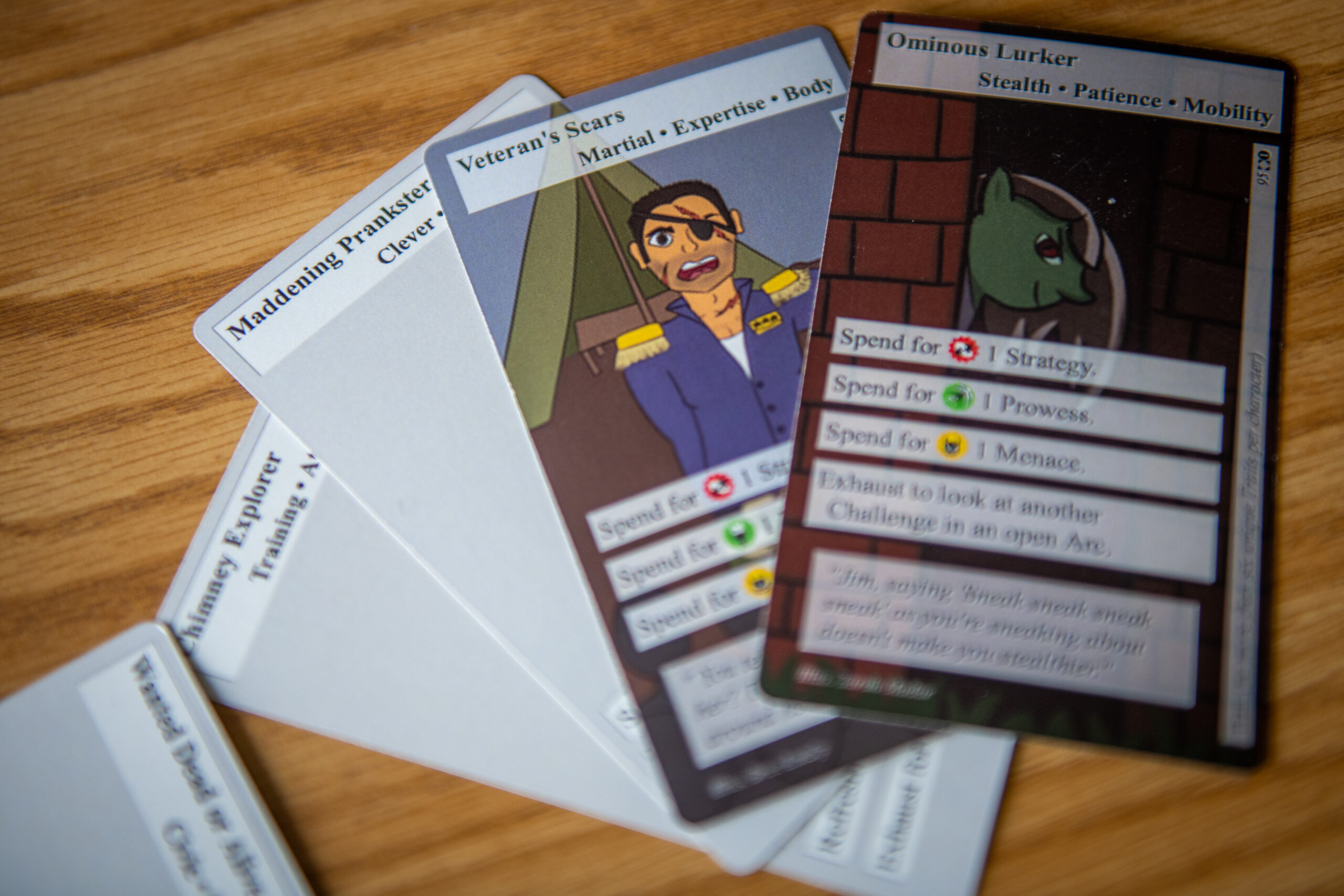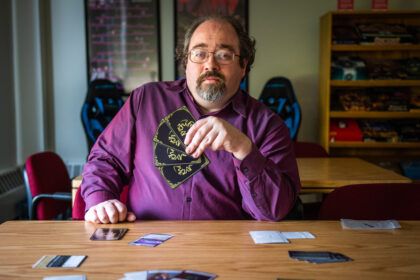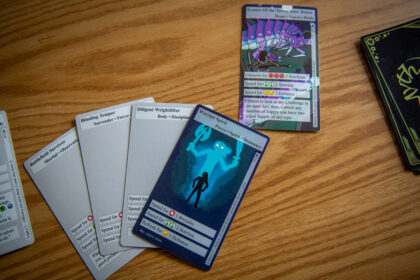‘It’s great to see my work come alive’

Most game design students are drawn to working with cutting-edge technology such as virtual reality, but there’s value in going back to the basics. For a group of Becker School of Design & Technology students, this has meant ditching PCs and handheld consoles to work on a tabletop card game during a semester-long internship.
“Physical games still offer a significantly greater social element than some digital games,” says Tony Cunha ’23. “There is a reason why people will still meet up to play Dungeons & Dragons when they could just as easily play in a Discord server.”
Cunha and eight other students have been refining “Mythifex,” a role-playing card game that Professor Nevin Flanagan created when he was an MFA student. The game started as an exercise in randomly creating heroic characters and adventures. It is still in development, and Flanagan created an internship opportunity for current BSDT students to modify and improve the game.
“It’s a passion project for us,” says Cunha.
“Mythifex” has some elements of Dungeons & Dragons. Each player creates a character using a collection of attribute cards. The attribute cards combine a resource from three categories (task, battle, and social) to assist characters in facing various challenges and obstacles. Some attribute cards include effects that can alter how the game is played. As play progresses, participants use their cards to determine which parts of a task they can complete from one round to the next, but risk losing a card if they cannot produce a resource. The goal is to navigate one’s way through as many paths as possible, assembling and extending a custom story as they go.

“Having so many thinkers on a project makes it easier to explore lots of possibilities,” says Flanagan. “It was students who convinced me that some kind of inventory system to give the players disposable resources was really important.”
The team worked hard to design rules and instructions that are easily digestible for the player and allows them to embrace the tactile element of tabletop play, something that can’t be replicated by a computer.
“Our team has made unique mechanics that take advantage of the physical nature of the game, like rolling a die rather than clicking a button and playing for an actual collection of gold beads versus seeing a digital representation on a screen,” says Cunha, who worked on content and systems design.
“There’s a strong suggestion that people experience game moves differently when sliding their fingers over a surface than they do when clicking a mouse or pressing keys,” Flanagan adds. “Holding something in your hands changes things further.”
The internship has helped prepare students for a game design job.
“This project has given me experience working in areas that I expect to encounter in the industry, like content creation, game balancing, and systems design,” says Cunha. “Even something as simple as starting a discussion or keeping the group focused is valuable as well.”

Marta Szemiot ’23 helped illustrate the physical cards for the game.
“Playing games in person is important. I still try to pick up new games and learn them to play with my friends,” says Szemiot. “It’s a social event, and I think people will continue to value time with other people face to face, even with ample digital options.”
Students consult with Flanagan before tweaking the game to ensure it aligns with his original vision. With each step to get “Mythifex” closer to the finish line, students are excited to make a lasting contribution.
“As an artist, seeing my illustrations in the finished product of a board game is very rewarding,” says Szemiot. “It’s great to see my work come alive.”
Flanagan hopes to take the next step in bringing that work to life for a commercial audience.
“I’d love to see ‘Mythifex’ make its way to game store shelves,” he says. “It’ll probably take a crowdfunding effort to commission enough illustrations for all the cards, but the game has gotten a lot of enthusiasm from testers and demo players, and I want to put game credits including students’ names in front of as many people as possible.”


